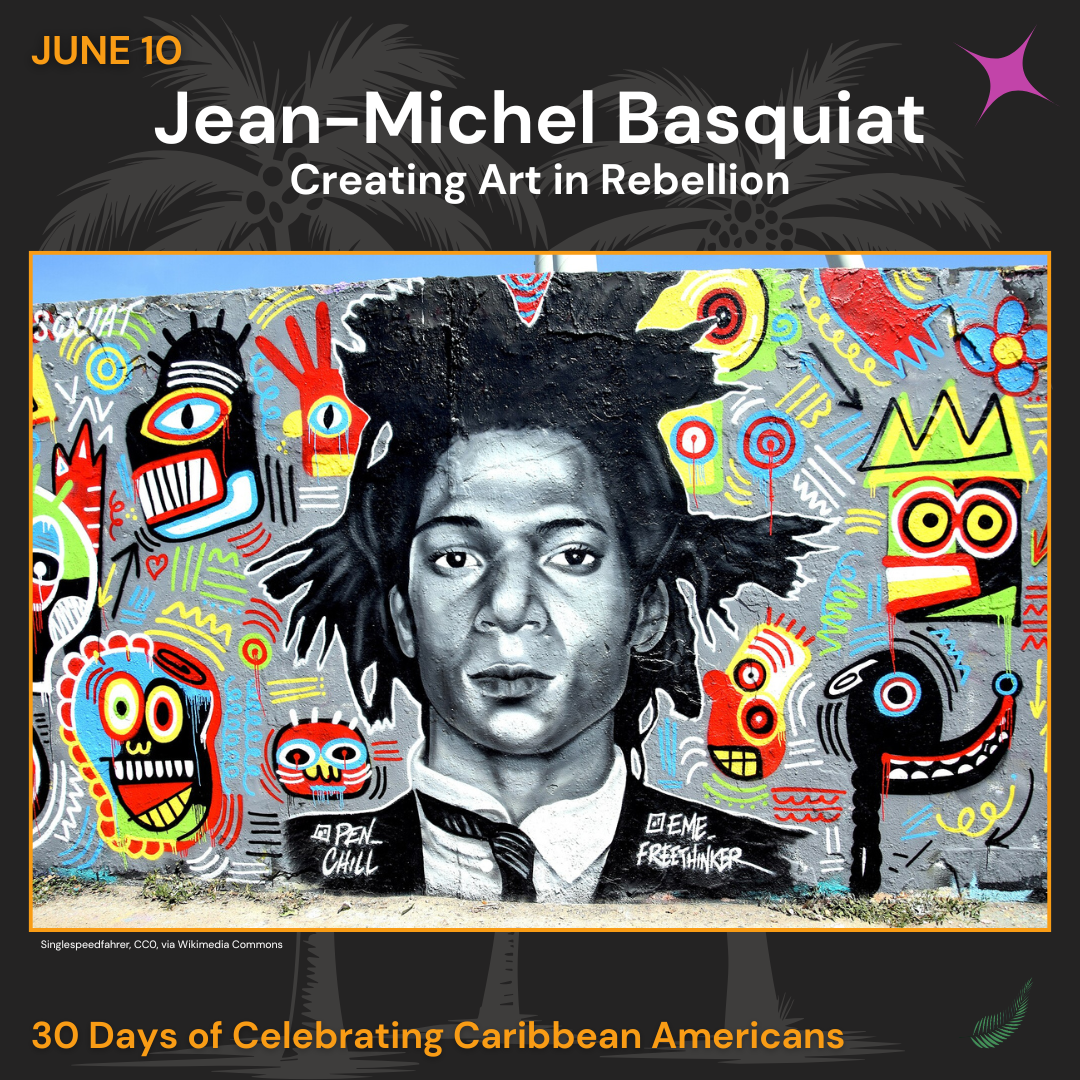Day 10. Jean-Michel Basquiat Creating Art in Rebellion

Honoring the Haitian and Puerto Rican American painter whose work fused street art, poetry, and social commentary
Art That Demanded to Be Seen
Jean-Michel Basquiat wasn’t just a painter—he was a revolutionary force in contemporary art. Born in Brooklyn in 1960 to a Haitian father and Puerto Rican mother, Basquiat exploded onto the New York art scene in the late 1970s with a raw, urgent style that fused graffiti, fine art, history, and political critique.
Emerging from the Downtown Manhattan scene under the graffiti tag SAMO©, Basquiat challenged elite art spaces with bold, defiant canvases that bore witness to the Black experience, colonialism, capitalism, and power.
“I am not a Black artist. I am an artist.” — Jean-Michel Basquiat
Yet his work was deeply, undeniably, and powerfully Black—and it shifted the center of who gets to be seen as genius.
A Legacy of Defiant Beauty
Basquiat’s work blended fragmented text, human anatomy, symbols, and powerful figures—like jazz musicians, saints, and kings—each layered with complexity and contradiction. His iconic crown motif crowned Black figures often excluded from traditional narratives of greatness.
His meteoric rise brought him into collaboration with Andy Warhol, and by age 21, he was the youngest artist to exhibit at the Whitney Biennial. But fame came with exploitation and tokenization in a predominantly white art world that was quick to commodify him, even as it failed to fully understand him.
Basquiat died tragically at 27—but in those short years, he transformed art forever.
“Basquiat’s paintings were a kind of cry… one of resistance, pride, and demand for recognition.” — Bell Hooks
Stories and Cultural Impact
Basquiat’s legacy lives on in hip hop lyrics, fashion lines, museum retrospectives, and global street art. From Beyoncé and Jay-Z referencing him in music videos to young artists inspired by his urgency, he remains a symbol of creative rebellion and Afro-Caribbean excellence.
His painting Untitled (1982) (https://en.wikipedia.org/wiki/Untitled_(1982_Basquiat_skull_painting) ) sold for over $110 million in 2017—the most ever paid at auction for a work by an American artist at the time.
But more than market value, it is his spirit of resistance, wild brilliance, and Caribbean-rooted identity that continues to inspire.
Learn More About Jean-Michel Basquiat
📚 Read:
“Basquiat: A Quick Killing in Art” by Phoebe Hoban
TateWard Auctions: A Tribute to Jean-Michel Basquiat
🎥 Watch:
“Jean-Michel Basquiat: The Radiant Child” (2010 Documentary)
Basquiat (1996 Film starring Jeffrey Wright)
🖼️ Explore Art:
Basquiat Collection at the Broad Museum
Basquiat at MoMA
Today’s Reflection
Basquiat painted in a language few could fully translate, but all could feel. His work reminds us to ask:
How are we amplifying bold, disruptive voices in our own communities? And how do we hold space for those who challenge power not with politeness, but with unapologetic truth?
Join us each day this month as we spotlight a different Caribbean American whose legacy calls us to reflect, learn, and celebrate. These stories are about community, culture, and the contributions that come from the rich intersections of heritage and homeland. Our weekly themes will help guide us through different aspects of Caribbean American influence—from activism to art, invention to entrepreneurship—creating a mosaic of identity that is as joyful as it is complex.
For more information and access to other events, sign our Guestbook!
Discover more from SepulvedaUU
Subscribe to get the latest posts sent to your email.
